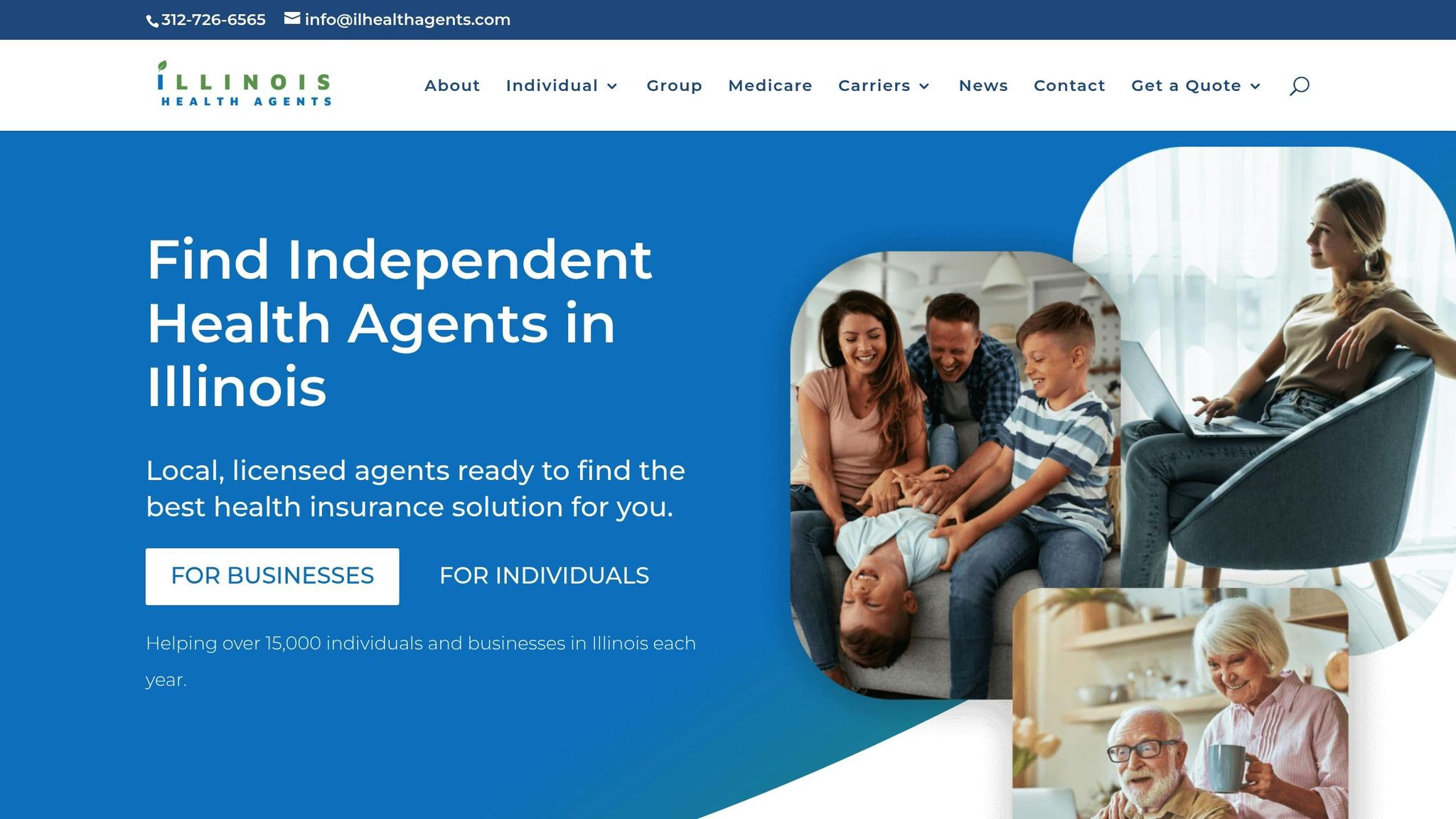If you experience a major life event like getting married, getting divorced, or having a baby, you may qualify for a Special Enrollment Period (SEP) to update your health insurance outside the regular Open Enrollment window (November 1 – January 15). Here’s what you need to know:
- Marriage: You have 60 days from your wedding date to enroll in a new plan or join your spouse’s plan. Documentation like a marriage certificate is required.
- Divorce: Losing coverage due to divorce triggers an SEP. Options include COBRA, employer-sponsored plans, or ACA Marketplace plans. Proof of divorce and coverage loss is necessary.
- Birth or Adoption: Newborns and adopted children are covered retroactively from the date of birth or adoption. You must officially add them to your plan within 30-60 days, depending on your insurance.
Key Deadlines:
- 60 days to enroll after the event.
- 30 days to provide required documents after selecting a plan.
Act quickly to avoid coverage gaps. Missing deadlines may leave you waiting until the next Open Enrollment.
What is a special enrollment period?
Marriage and Health Insurance: Key Facts
Getting married opens the door to new health insurance options. Whether you’re joining your spouse’s plan or shopping for a new Marketplace plan together, marriage offers a chance to adjust your coverage. Here’s what you need to know about enrollment timelines, required paperwork, and when your new coverage kicks in.
60-Day Enrollment Window for Newlyweds
Marriage is considered a qualifying life event, which means it gives you access to a 60-day Special Enrollment Period (SEP). This window starts on your wedding day and allows you to make changes to your health insurance. For example, if you get married on June 15, you have until August 14 to enroll in a plan.
During this time, you can either join your spouse’s existing plan or select a new Marketplace plan that fits both your needs. To make the most of this opportunity, review plan options carefully to ensure they cover your preferred doctors, services, and any ongoing medical conditions.
Required Documents for SEP Approval
To secure coverage during your SEP, you’ll need to provide documentation that confirms your marital status. Accepted documents include:
- Marriage certificates
- Marriage licenses
- Affidavits of marriage
- Public or religious records of your marriage
Once you’ve chosen a plan, you’ll have 30 days to submit your proof of marriage. Keep in mind, this 30-day clock starts when you select a plan – not on your wedding date. After enrolling, check your Eligibility Results Notice for details on what documents are required. Submitting these promptly is key to avoiding delays in your coverage.
When Coverage Starts After Marriage
Understanding when your new coverage begins is crucial to planning your healthcare. For Marketplace plans, the start date depends on when you enroll. If you sign up by the 15th of the month, your coverage will start on the first day of the following month. If you enroll after the 15th, coverage begins the month after that.
Additionally, your coverage won’t start until you’ve made your first premium payment. To avoid any gaps in coverage, it’s best to complete your enrollment and submit all necessary documents as soon as possible after getting married. This ensures you can start using your new benefits without interruption.
Divorce and Loss of Coverage: Your Options
Divorce can lead to a significant change in health insurance coverage, but it also triggers a Special Enrollment Period (SEP), giving you the chance to secure a new plan.
How Divorce Affects Your Coverage
Once your divorce is finalized, you’ll likely lose access to your spouse’s employer-sponsored health insurance plan. Since divorce is considered a qualifying life event, you’re eligible to purchase a new health plan outside the regular open enrollment period.
Here are your main options for coverage:
- COBRA Continuation Coverage: You can keep your current plan through COBRA, but be prepared – it can be pricey since you’ll be responsible for the full premium.
- Employer-Sponsored Plans: If you’re employed, check if your employer offers health insurance you can join.
- ACA Marketplace Plans: The ACA Marketplace offers plans that include 10 essential health benefits, which might be a good fit for your needs.
Before moving forward, ensure you have the necessary documentation to validate your SEP.
Proof Required for Divorce-Related SEPs
To qualify for a Special Enrollment Period tied to divorce, you’ll need to provide proof of both the divorce and the resulting loss of coverage. Acceptable documentation may include a divorce decree or court order, along with evidence showing your previous coverage has ended. Be sure to submit these documents within 30 days of selecting a new plan.
If your financial situation has changed because of the divorce, you may also want to explore Medicaid or CHIP as potential options.
Medicaid and CHIP Options After Divorce

Divorce often impacts household income, which might make you or your children eligible for programs like Medicaid or CHIP. These state-run programs can help prevent coverage gaps if your income qualifies.
For women who have recently given birth, Medicaid may provide coverage for up to 12 months postpartum if your household income is at or below 213% of the federal poverty level. If you’re ineligible for Medicaid due to immigration status, programs like Get Covered Illinois can help you find affordable insurance options with financial assistance.
sbb-itb-a729c26
Adding a Newborn or Adopted Child to Your Plan
Welcoming a new child into your family – whether through birth or adoption – is a major life event that allows you to update your health insurance outside of the usual open enrollment period.
Retroactive Coverage for Newborns
Your newborn is automatically covered from the moment they’re born, even if you haven’t completed the enrollment process yet.
"Newborns are covered for 14 days under the mother’s plan; you must formally add them within 30 or 60 days, depending on your insurance." – HealthCareInsider.com
This retroactive coverage ensures that any medical care your baby receives in those early days will be accounted for once you finalize the enrollment. Timing is crucial – you need to officially add your baby to your plan within the specified window. Missing this deadline could leave you waiting until the next open enrollment period to secure coverage.
The same applies to adopted children. Their coverage begins on the date of adoption or placement, even if the enrollment process is completed later, as long as it’s within the Special Enrollment Period.
Marketplace vs. Employer Plans for Dependents
The process for adding a child differs between Marketplace and employer-sponsored plans. Marketplace plans provide a 60-day Special Enrollment Period (SEP) following a birth or adoption, while employer-sponsored plans typically require notification within 30 days .
Marketplace plans offer more flexibility. You can add your child to your current plan or select a separate plan just for them. Adding a child might also impact your eligibility for subsidies or premium tax credits, potentially lowering your monthly costs. On the other hand, employer-sponsored plans usually require you to include your child under your existing family coverage. While premiums may increase, these costs are often still lower than those for individual Marketplace plans, especially if subsidies aren’t involved.
When deciding between the two, carefully compare factors like premiums, deductibles, copays, and network coverage to determine what works best for your family.
Required Documents for Child Enrollment
Once you’ve selected a plan, gather the necessary documents to complete your child’s enrollment. The paperwork varies slightly depending on whether you’re enrolling a newborn or an adopted child, but the process is generally straightforward.
For newborns, most insurance providers accept a birth certificate or hospital-issued proof of birth.
"Most of the time, you’ll just need your baby’s birth certificate or proof of birth." – Stacy Edgar, co-founder and CEO of Venteur
For adopted children, the requirements are more detailed. Typically, you’ll need official adoption papers. If the adoption is still in progress, a placement letter from the court or adoption agency is usually enough. Once finalized, you’ll need the court’s adoption order. For international adoptions, additional immigration documents may be required to verify your child’s legal status.
No matter your situation, timing is key. It’s a good idea to contact your insurance provider or HR department as soon as possible after your child’s birth or adoption to confirm the required paperwork. Insurance companies understand the importance of these life events and generally work with families to make the process as smooth as possible.
How to Avoid SEP Application Rejections
Getting your Special Enrollment Period (SEP) application approved requires careful attention to detail and timing. Many applications are rejected due to simple, avoidable errors. By understanding the common issues and meeting all requirements, you can help ensure your coverage starts when you need it.
Submit Documents on Time
Make sure to submit all required documents within 30 days of selecting your health plan. That 30-day countdown begins the day you choose your plan.
"You could lose your insurance or financial assistance. If you’re enrolled in a plan and don’t send documents by the deadline in your Marketplace notice, you could lose your health coverage or savings. Submit the documents as soon as possible."
The fastest way to submit your paperwork is online. Use accepted file formats like .pdf, .jpeg, or .png, and ensure each file is under 10MB with clear file names. Online submissions provide instant confirmation that your documents were received. If you prefer mailing your documents, send photocopies – never originals.
After submitting, you’ll receive a notification in your HealthCare.gov account within a couple of weeks confirming whether your SEP application was approved. If your documents aren’t accepted initially, you can upload new ones or submit a letter explaining why you don’t have the required paperwork. Staying on top of deadlines and following submission guidelines can make all the difference.
Income Verification for Subsidy Changes
Accurate income documentation is just as important as meeting deadlines. Changes in your household income can affect your subsidy eligibility. To avoid errors, submit updated income documents like recent pay stubs, W-2s, or tax returns.
If your financial situation has changed recently, it’s better to provide current income records rather than relying on older tax documents. For example, a recent pay stub or a letter from your employer confirming a salary adjustment can offer a more accurate reflection of your income for subsidy calculations.
Address Verification for Illinois Plans
Keeping your address information up-to-date is another critical step. Address mismatches are a common reason for application rejections, particularly if you’ve recently moved.
If you’re in Illinois, make sure your address is updated with all relevant agencies before applying. The Illinois Department of Revenue shares your contact and income information with the Illinois Department of Healthcare and Family Services and the Illinois Department of Insurance to confirm your eligibility for health benefits.
For Illinois residents, applications can be submitted through Get Covered Illinois, the official ACA Marketplace for the state. If you think you might qualify for Medicaid, you can also apply directly at ABE.illinois.gov. Keeping your records updated ensures your application is accurate and helps match you with the right insurance networks – especially if you’re moving between counties in Illinois.
If your application is rejected, don’t lose hope. You have 90 days to file an appeal.
"If you believe you should qualify for a special enrollment period but your initial application is rejected, you can file an appeal through the Marketplace."
Conclusion: Managing SEPs for Life Changes
Key Points to Remember
Special Enrollment Periods (SEPs) offer a critical opportunity to adjust your health insurance coverage when major life events – like marriage, divorce, or the birth of a child – disrupt your current plan. These periods provide a 60-day window to select a new plan, but timing is everything. You’ll need to act quickly and submit the necessary documentation within 30 days to avoid any gaps in coverage.
The type of documentation required depends on your specific situation. For example, proof might include a marriage certificate, divorce decree, or a birth certificate. Starting in mid-May 2025, HealthCare.gov will also require proof of coverage loss for most SEP situations. This makes submitting the right documents on time even more important to maintaining uninterrupted coverage.
How Illinois Health Agents Can Help

Navigating SEPs can feel overwhelming, but expert help is available. Illinois Health Agents can guide you through the process, from understanding SEP deadlines to verifying your documentation and selecting the best plan for your needs. Their expertise ensures that you stay compliant with Illinois-specific requirements.
For Illinois residents, this local knowledge is especially helpful. They can assist in aligning your address with county-based insurance networks, making sure you secure the right coverage during life’s unpredictable transitions. Having professional support during these times can make a big difference in keeping your health insurance on track.
FAQs
What happens if I miss the 60-day Special Enrollment Period after a life event like marriage, divorce, or the birth of a child?
If you miss the 60-day Special Enrollment Period after a major life event – like getting married, divorced, or welcoming a new child – you’ll typically have to wait until the next Open Enrollment Period to apply for or change your health insurance. Depending on the timing, this could leave you without coverage for several months.
To prevent any gaps in your health insurance, it’s crucial to act fast and submit the necessary paperwork within the 60-day timeframe. Feeling uncertain about the process? A knowledgeable health insurance expert, such as Illinois Health Agents, can guide you through the steps and help ensure you meet all the required deadlines.
What can I do to make sure my health insurance documents are processed quickly and without delays?
To make sure your health insurance documents are processed without delays, submit them as soon as you’ve selected your plan. Typically, you’ll have 30 days to provide the necessary paperwork, so acting quickly helps ensure your coverage begins on time.
When submitting your documents, use clear, high-quality scans or photos that meet the requirements outlined in your Marketplace Eligibility Notice. Electronic submission is usually the quickest and most dependable method. Before sending, double-check that all the information is correct and complete to avoid any potential processing hiccups.
What should I do if my income changes significantly after a divorce, and how might this impact my Medicaid or CHIP eligibility?
A change in income following a divorce can have a direct impact on your eligibility for programs like Medicaid or the Children’s Health Insurance Program (CHIP). Medicaid eligibility is determined by your Modified Adjusted Gross Income (MAGI), which includes all taxable income. If your income drops below your state’s Medicaid threshold, you may qualify for coverage. Conversely, if your income rises, you might no longer be eligible for Medicaid. However, you could still qualify for CHIP if you have children and your income is too high for Medicaid but not enough to afford private insurance.
Make sure to notify your state’s Medicaid office or the health insurance marketplace about any income changes as soon as possible. This notification could open up a Special Enrollment Period, giving you the chance to adjust your coverage to better align with your new financial situation.




0 Comments